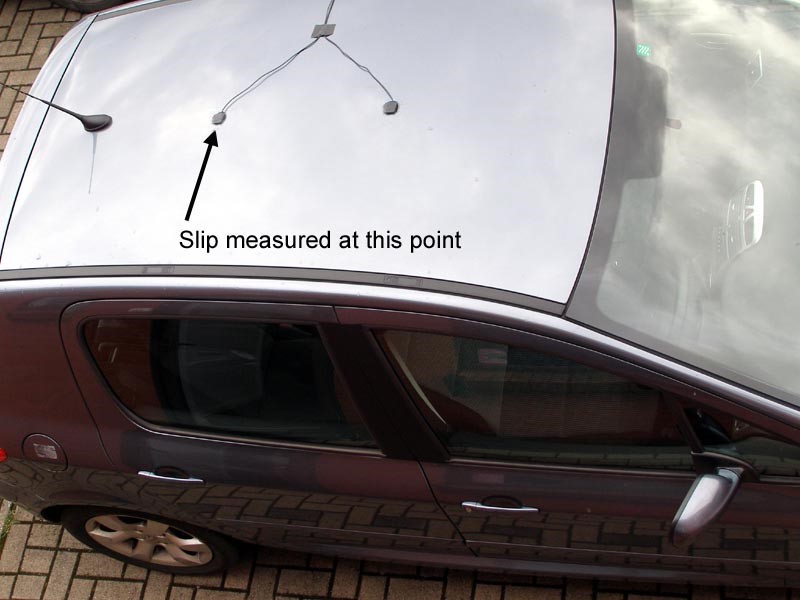06 - VBOX 20SL Dual Antenna Placement

Whilst installation and use of the VB20SL is intended to be fast and simple, careful attention must be paid to placement of the two antennas.
Note: It is essential that the separation of the two antennas is exactly the same as the value set in the unit’s configuration screen. If the separation is incorrect, data may not be given or may be inaccurate. The measured distance between the antennas should be the straight-line distance between the antennas regardless of the mounting angle. It is not the 2D distance between the antennas as viewed from above.

The picture above shows a typical antenna placement for the measurement of Body Slip Angle and Pitch angle.
Antenna A is the primary antenna, from which all calculations are based. If overall slip is to be measured (at the centre of the vehicle), the primary antenna should be placed rearward of the secondary. Alignment of the antennas is not completely essential as the Slip Angle Sensor has the ability to calculate any offset. See the Slip Angle Offset Section.
However if you wish to measure Pitch or Roll then the alignment of the antennas must be in line with the vehicle or at 90o as accurately as possible.
The picture below shows a typical antenna placement for the measurement of Body Slip Angle and Roll angle.

When measuring slip at a specific point on a vehicle (for example over a given wheel), the primary antenna must be placed over this point on the vehicle, whilst the secondary antenna should be placed towards the centre of the vehicle.
GPS antennas require a ground plane to operate correctly. Usually, the metal roof of a vehicle performs this function. However, if a test requires an antenna to be placed off of the vehicle, then a special Ground Plane ‘mushroom-style’ antenna must replace the off-vehicle antenna, as these antennas are capable of operating without a ground plane. The Ground Plane ‘mushroom’ style antennas RLVBACS065 are available from your VBOX distributor.
If only one antenna will be placed ‘off-vehicle’ then only one Ground Plane antenna need be purchased.

Antenna Separations >2 m
When the antenna separation is >2 m it is advised where possible to mount the antennas as level as possible so that the ‘LEVEL’ option can be enabled, otherwise the RTK lock is not so reliable and the Slip and Roll/Pitch data can drop out or become intermittent.
The VB20SL must only be used with the supplied antenna, unless instructed otherwise by Racelogic.
GPS Antenna
The GPS Antennas supplied with the VB20SL are 3.5 V active antennas. For the best possible signal quality, it is important to maintain a clean connection between the antennas and the VBOX. Before fixing the antennas to the VBOX, ensure that there are no dust particles in either connector. Replacement antennas are available by contacting your VBOX distributor.
The antenna is a magnetic mounting type for quick and simple mounting to the vehicle roof. For optimum GPS signal reception, make sure that the antenna is fitted to the highest point of the vehicle away from any obstructions that may block satellite reception. The GPS antenna works best with a metal ground plane underneath (eg. Vehicle roof).
Please also note that when using any GPS equipment, a clear sky view is important. Objects in the surrounding area such as tall buildings or trees can block the GPS signal causing a reduction in the number of satellites being tracked, or introducing reflected signals that can decrease the accuracy of the system.
NOTE: VB20SL can struggle with maintaining an RTK lock required for Slip and Pitch measurement if the antennas are placed too close to Roof Bars. If a poor mounting position cannot be avoided then use Ground plane antennas, RLVBACS065.
.jpg?revision=1)
